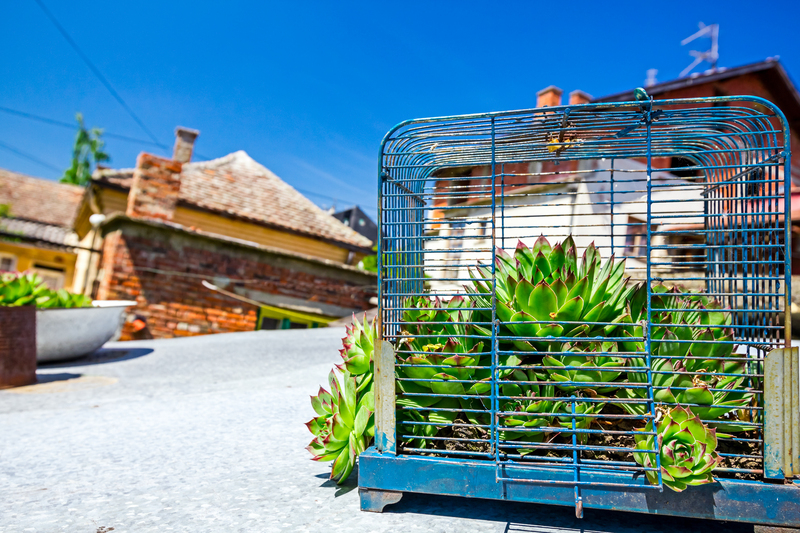How to Cultivate Poppies Successfully
Posted on 20/12/2024
Poppies, with their vibrant and delicate blossoms, offer a striking aesthetic appeal to gardens and landscapes. Cultivating these flowers can be a fulfilling experience provided one adopts the right methods and understanding. This guide provides a detailed analysis on how to cultivate poppies successfully, from seed selection to blooming.
Understanding Poppy Varieties
Before diving into cultivation practices, it's crucial to understand the diverse types of poppies available. There are several varieties, each with unique characteristics and growing requirements:
- Oriental Poppies (Papaver orientale): Known for their large, showy flowers and perennial nature.
- Iceland Poppies (Papaver nudicaule): Ideal for cooler climates, these are short-lived perennials often grown as biennials.
- Flanders Poppies (Papaver rhoeas): Also known as field poppies, these are annuals that bloom profusely in vibrant red shades.
- Himalayan Blue Poppies (Meconopsis betonicifolia): Famous for their stunning blue flowers, but require specific cool, moist, and shaded conditions.

Seed Selection and Preparation
The first step towards a successful poppy cultivation is selecting high-quality seeds. Purchasing seeds from a reputable supplier ensures better germination rates and healthy growth. Once you have the seeds, it's essential to prepare them for sowing.
One effective method is cold stratification. This process involves mimicking winter conditions to trigger seed germination. Here's how you can do it:
- Mix the seeds with a small amount of damp sand.
- Place the mixture in a sealable plastic bag.
- Store the bag in the refrigerator for 2-3 weeks before planting.
Soil Preparation and Planting
Poppies thrive in well-drained soil with a neutral to slightly alkaline pH. Prepare your garden bed by incorporating organic matter like compost or well-rotted manure to improve soil fertility and structure.
- Sowing Seeds: Scatter the seeds directly onto the soil surface and gently press them down. Poppies need light to germinate, so avoid burying the seeds deeply.
- Spacing: Ensure adequate spacing between seeds, typically around 6-8 inches apart, to reduce competition and improve air circulation.
- Timing: For best results, sow poppy seeds in early spring or late fall. Poppies tolerate light frost, making early sowing viable in cooler climates.
Watering and Nutrients
While poppies are relatively drought-tolerant, they require consistent moisture during germination and early growth stages. Water the plants gently and ensure the soil remains moist but not waterlogged.
- Irrigation: Drip irrigation systems or soaker hoses are ideal for providing steady moisture without disturbing the delicate seedlings.
- Fertilization: Poppies generally don't demand heavy fertilization. A balanced, slow-release fertilizer applied during planting should suffice. Over-fertilization can lead to excessive foliage at the expense of blooms.
Sunlight and Temperature Requirements
Poppies generally prefer full sunlight, although some varieties like Himalayan Blue Poppies thrive in partial shade. Ensuring the right light conditions is crucial for abundant blooming.
- Sunlight Exposure: Most poppy varieties require at least 6 hours of direct sunlight daily. Orient your garden bed accordingly.
- Temperature Tolerance: Poppies flourish in cool to moderate climates. Excessive heat can hinder growth and blooming, so providing some afternoon shade in hot climates can be beneficial.
Pest and Disease Management
Poppies are relatively hardy plants but can occasionally fall prey to pests and diseases. Common issues include aphids, slugs, and fungal diseases like powdery mildew.
- Aphids: These small insects can be managed with insecticidal soap or neem oil. Additionally, attracting beneficial insects like ladybugs can help keep aphid populations in check.
- Slugs: Physical barriers like copper tape or organic slug pellets can deter slugs from damaging young plants.
- Fungal Diseases: Ensure proper spacing and avoid overhead watering to reduce fungal issues. Fungicidal sprays can be used if necessary.
Harvesting and Seed Collection
Once poppies have bloomed and their petals begin to fall, you can start collecting seeds for future planting or distribution.
- Seed Pods: Allow the seed pods to dry on the plant. Once they turn brown and start to crack, they are ready for harvest.
- Collecting Seeds: Cut the seed pods and place them in a paper bag. Shake the bag to release the seeds. Store collected seeds in a cool, dry place for future use.

Post-Bloom Care
Post-bloom care ensures that poppies continue to thrive and possibly even rebloom in favorable conditions.
- Deadheading: Removing spent flowers encourages the plant to produce more blooms and prevents self-seeding if undesired.
- Pruning: Trim back any dead or damaged foliage to maintain the plant's overall health and appearance.
- Mulching: Applying a layer of mulch around the base of the plants helps retain soil moisture and regulate temperature.
Conclusion
Cultivating poppies can be a deeply rewarding gardening endeavor. By understanding the specific needs of different poppy varieties and paying attention to details like soil preparation, watering, light, and pest management, anyone can successfully grow these beautiful flowers. Whether for personal enjoyment or aesthetic enhancement of landscapes, poppies are sure to bring vibrant colors and joy to any garden.



